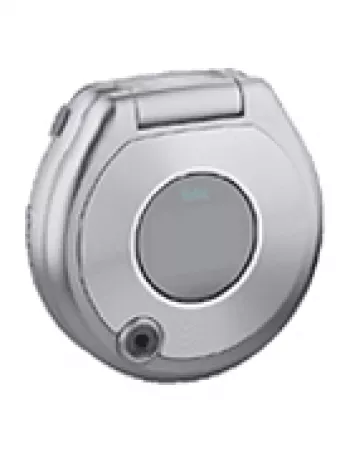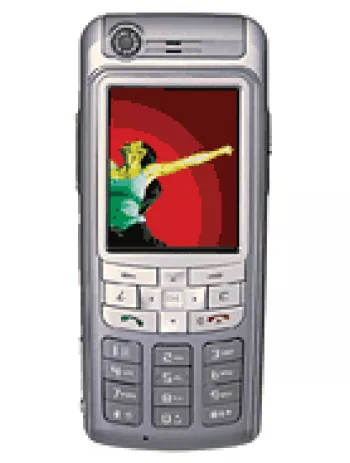
Introduction to Telit G90
The Telit G90 represents a snapshot of the early 2000s mobile technology. Announced in the fourth quarter of 2003, this device was a marvel at the time, combining basic communication functionalities with the early features of a smartphone. The G90 was discontinued shortly after its launch, but it remains an interesting piece of mobile history due to its unique features and the technological limitations it overcame.
Design and Build
The design of the Telit G90 was typical of early 2000s phones. It measures 97 x 52 x 28 mm and weighs 135 grams, making it somewhat bulky by today’s standards but reasonably portable for its time. The phone used a Mini-SIM format, and its casing was available in a classic silver color. The build quality was designed to be robust, capable of handling day-to-day wear and tear.
Display
The Telit G90 features a 2.2-inch TFT display, offering up to 65 thousand colors. Despite having a modest size compared to contemporary devices, the screen’s resolution of 176 x 220 pixels provided adequate clarity for basic tasks. This display size and color depth facilitated the viewing of essential applications and basic media, although it did not support high-resolution images or videos.
Camera
Equipped with a basic CIF camera, the Telit G90 was not designed for photography enthusiasts. The camera's resolution was just 0.1 MP, suitable primarily for capturing VGA-quality images under good lighting conditions. Video capabilities were absent, reflecting the technological constraints and user expectations of the time.
Performance and Memory
Powered by an Intel XScale 200 MHz processor, the Telit G90's performance was adequate for its intended use. This CPU allowed for basic multitasking and the operation of early smartphone applications. It ran on the Microsoft Smartphone 2002 operating system, which provided a foundation for early mobile computing. The device included 16MB of RAM and 32MB of internal ROM, along with an SD card slot for storage expansion.
Battery Life
The Telit G90 featured a removable 1000 mAh Li-Po battery. It offered up to 100 hours of standby time and approximately 2 hours of talk time. These figures were typical for devices of its era, reflecting a balance between power consumption and usage duration. The removable battery design also meant users could carry a spare battery for extended usage if necessary.
Connectivity and Communication
The Telit G90 operated on GSM networks, supporting 900, 1800, and 1900 MHz bands, which made it compatible with global mobile networks. It featured GPRS Class 10 for data communication, although it lacked modern connectivity options such as EDGE, Wi-Fi, and Bluetooth. Instead, it included an infrared port for data transfer. A proprietary USB allowed for basic connectivity, and the absence of a 3.5mm headphone jack meant users had to use specific accessories for audio output.
Audio and Alerts
Sound-wise, the Telit G90 was equipped with polyphonic ringtones and vibration alerts. The absence of a loudspeaker and audio jack limited its audio capabilities, hindering the phone's potential as a portable music player. The alerts were customizable through downloadable ringtones, allowing for personalization.
Browser and Internet Features
Although limited by contemporary standards, the Telit G90’s WAP 2.0/xHTML browser enabled basic internet browsing. It provided access to early mobile web services, offering users the ability to check emails and read news albeit with significant limitations in speed and rendering capabilities. Websites had to be specifically optimized to be viewable on such limited browser technology.
Legacy and Impact
Despite its limitations, the Telit G90 was part of the wave of devices that paved the way for modern smartphones. Its mixture of communication capabilities with early smartphone features positioned it as a transitional product in mobile history. It highlighted the trends that would lead to more advanced systems, influencing future designs and technological expectations.
Conclusion
The Telit G90 exemplified early efforts to incorporate smartphone features into mobile devices. While simplistic by today’s standards, it offered a foundation that would be built upon in subsequent years. By balancing basic applications and connectivity with robust design, the Telit G90 provided a glimpse into the fledgling world of smartphones, marking a significant step forward from basic mobile phones.
Key Features of Telit G90
- GSM Technology with 2G bands support (GSM 900 / 1800 / 1900)
- Compact dimensions: 97 x 52 x 28 mm
- Lightweight at 135 g
- Mini-SIM support
- 2.2-inch TFT display with 65K colors
- Pre-installed Microsoft Smartphone 2002 OS
- Intel XScale 200 MHz CPU
- Memory expandable via SD card
- 16MB RAM and 32MB ROM internal storage
- Infrared port for connectivity
- WAP 2.0/xHTML browser support
- Removable Li-Po 1000 mAh battery
- Compact form factor in Silver color
Disadvantages of Telit G90
- Discontinued model - not available for purchase.
- Lacks EDGE technology for faster data transfer.
- Bulky dimensions and heavier weight (135 g).
- Low screen-to-body ratio (~30.2%).
- Limited internal memory - 16MB RAM, 32MB ROM.
- Camera only supports CIF resolution with no video recording capability.
- No selfie camera available.
- No loudspeaker or 3.5mm audio jack.
- No Bluetooth or WLAN for wireless connectivity.
- Lacks GPS positioning.
- No FM radio support.
- Proprietary USB connection, limiting compatibility.
- Limited battery life with only up to 2 hours of talk time.


View Also
More Phones
All Rights Reserved +13671 Phones © Mobilawy 2025

























